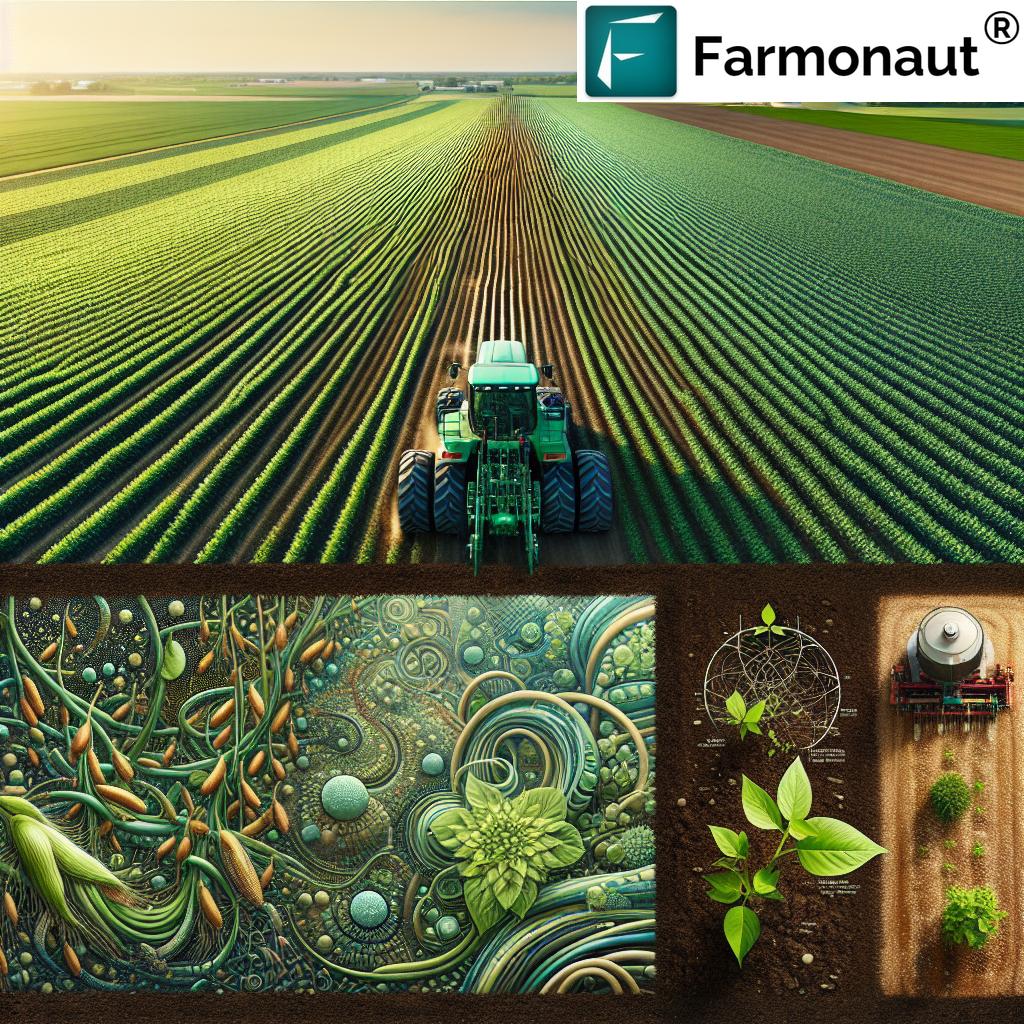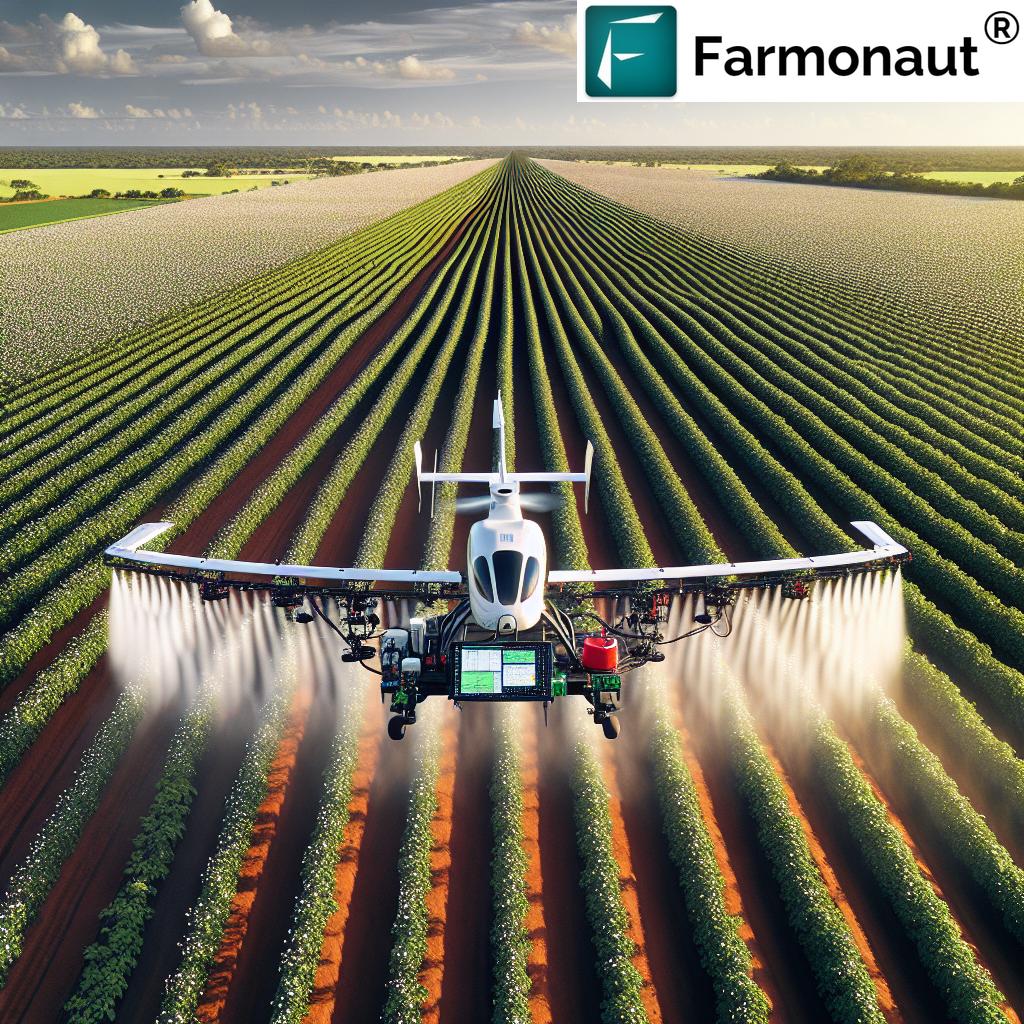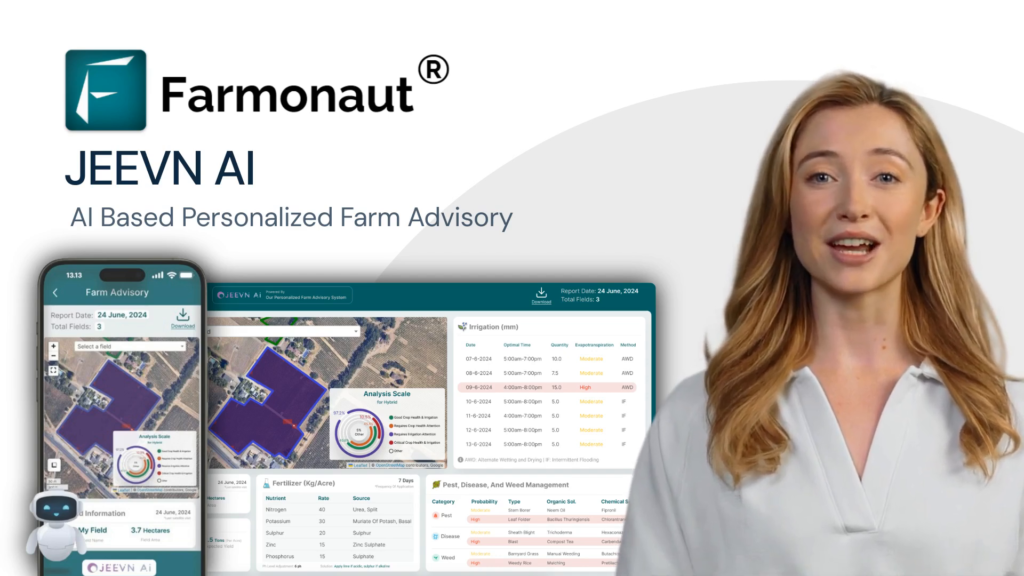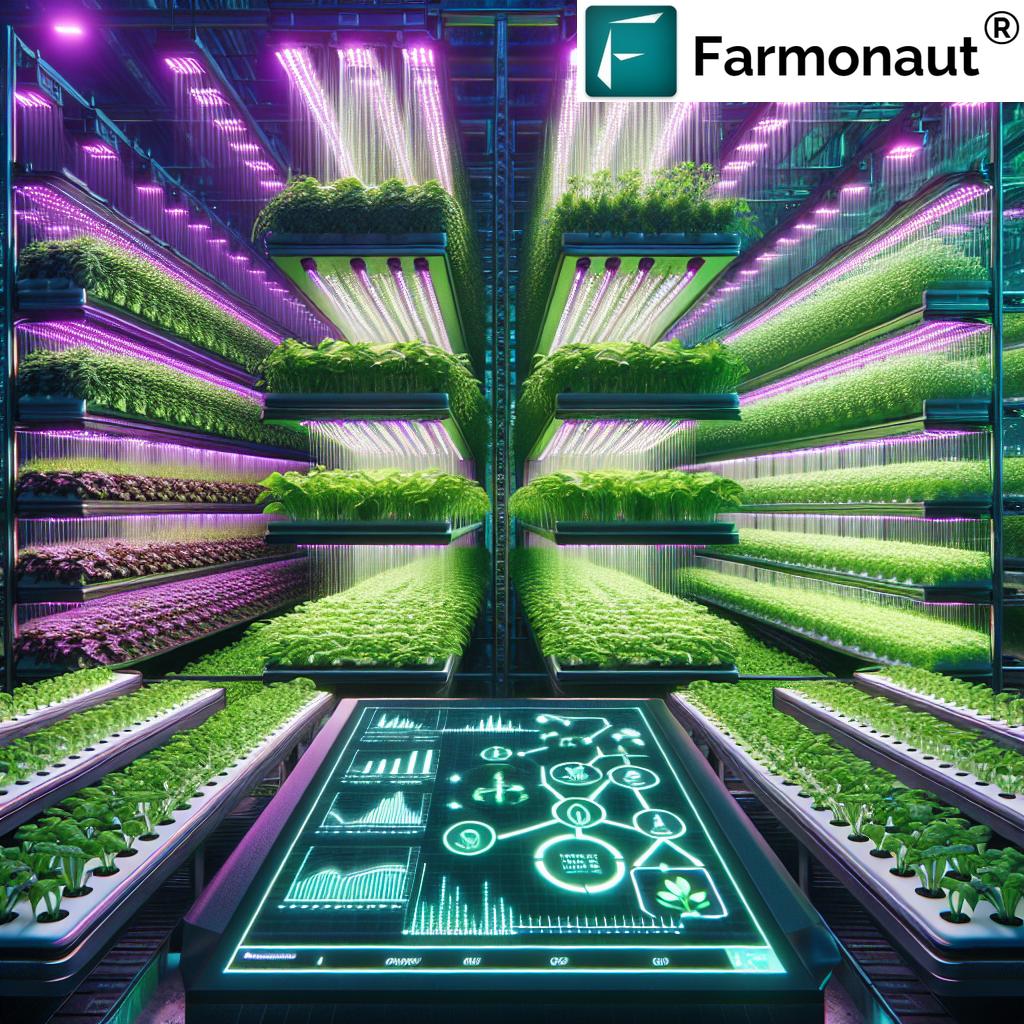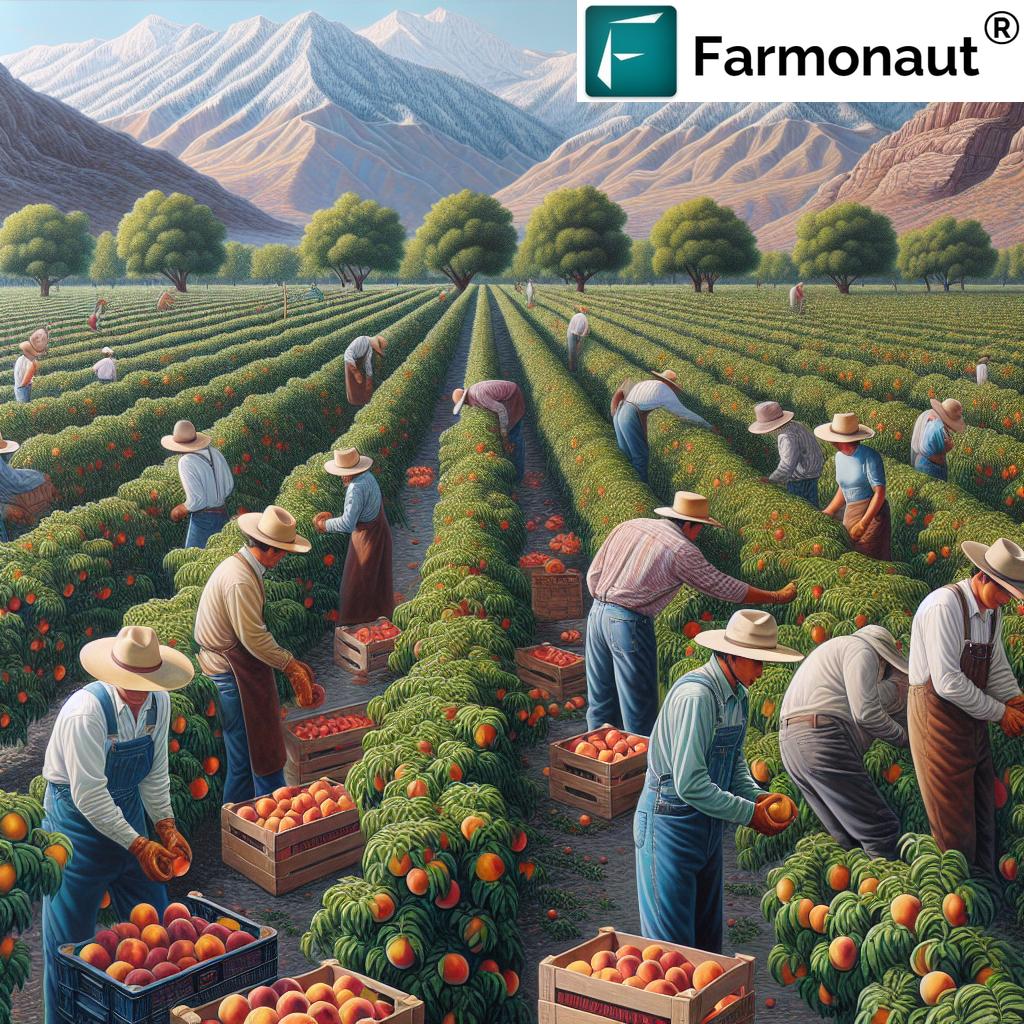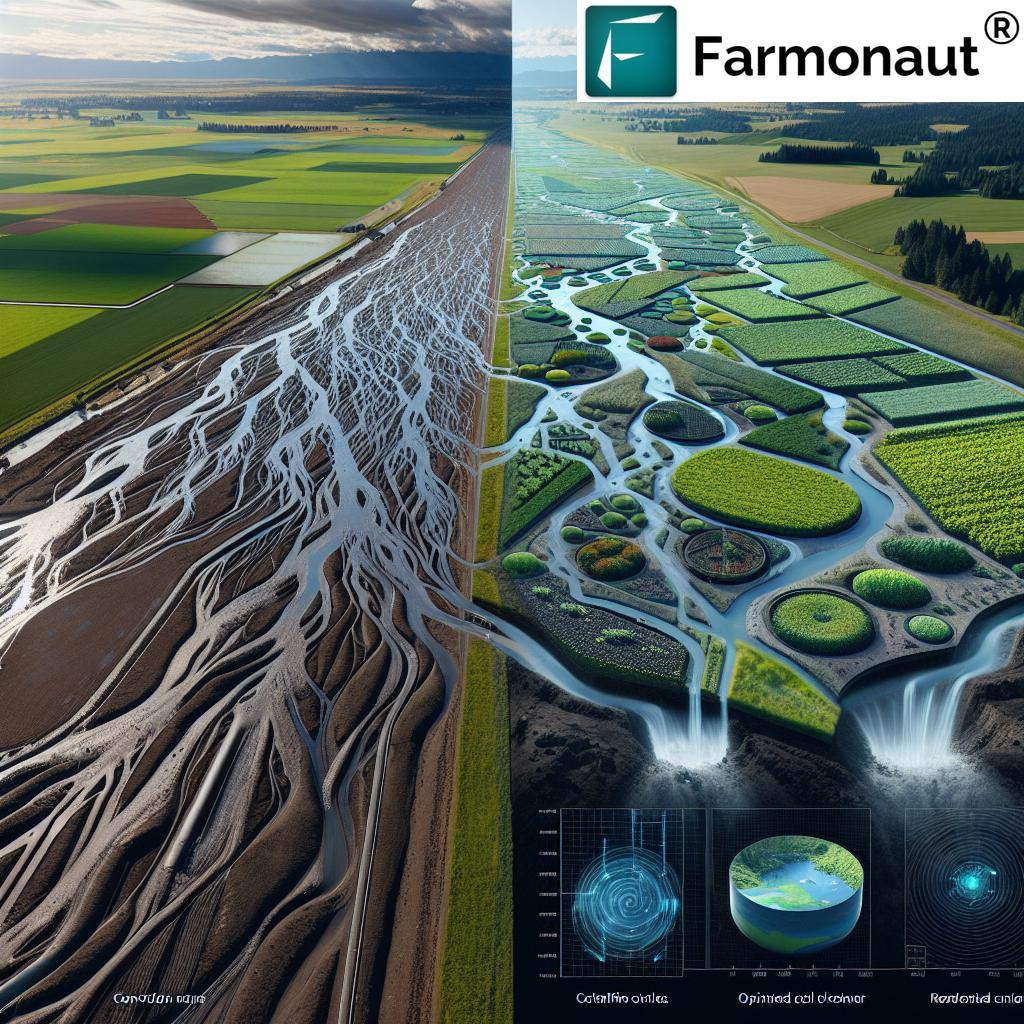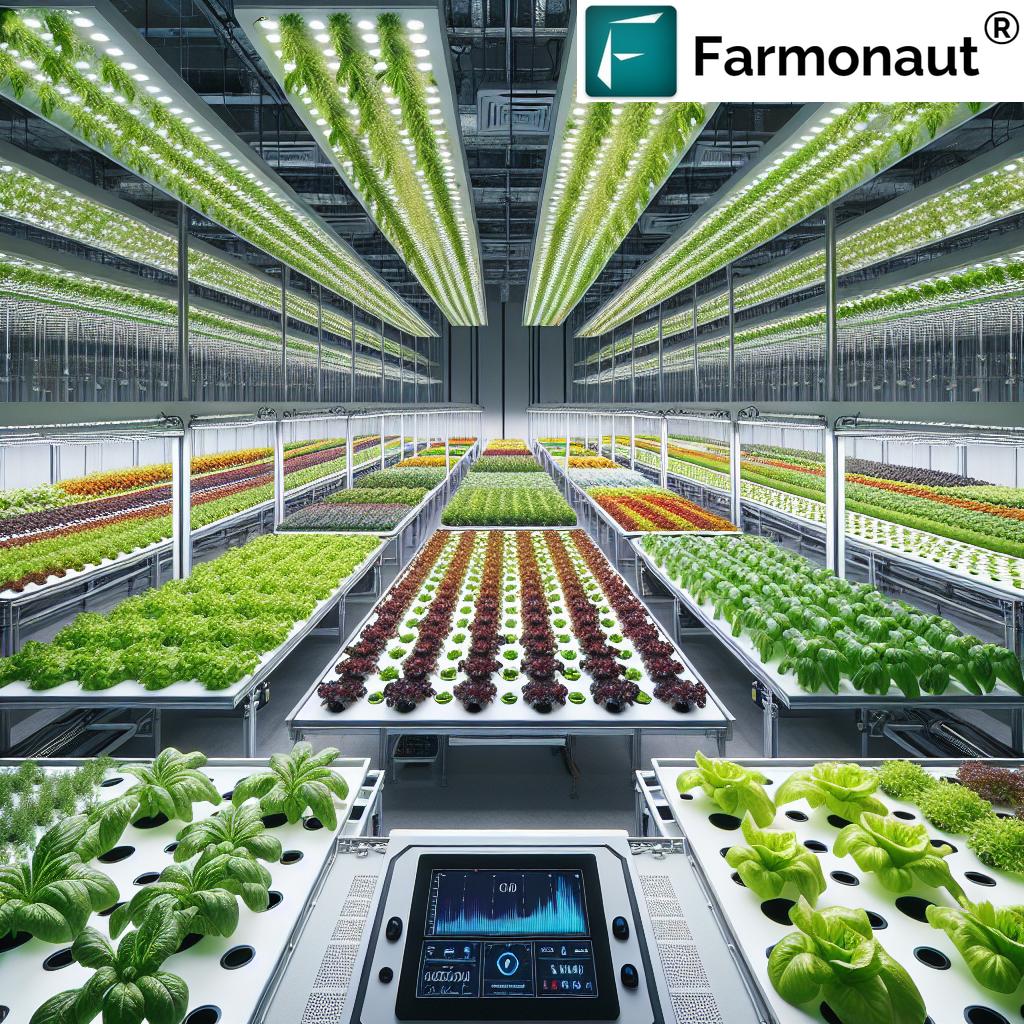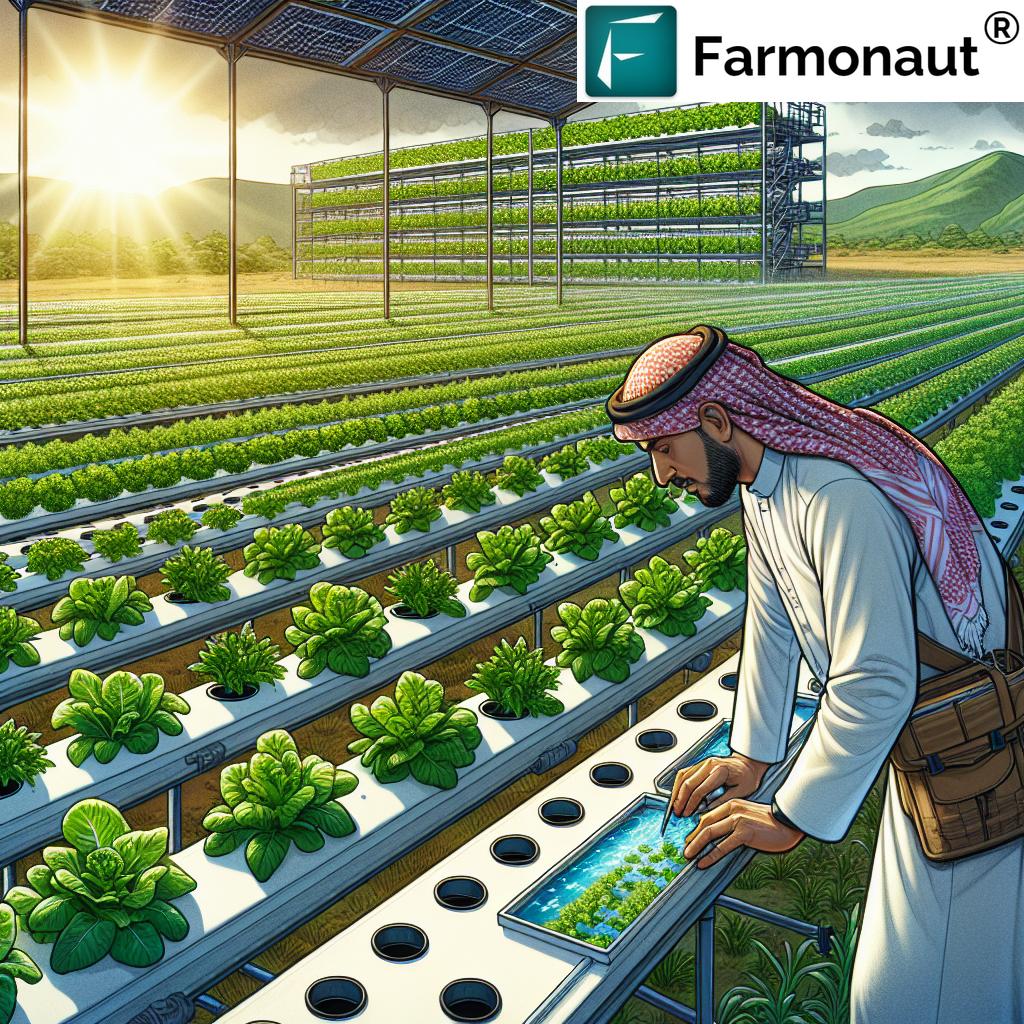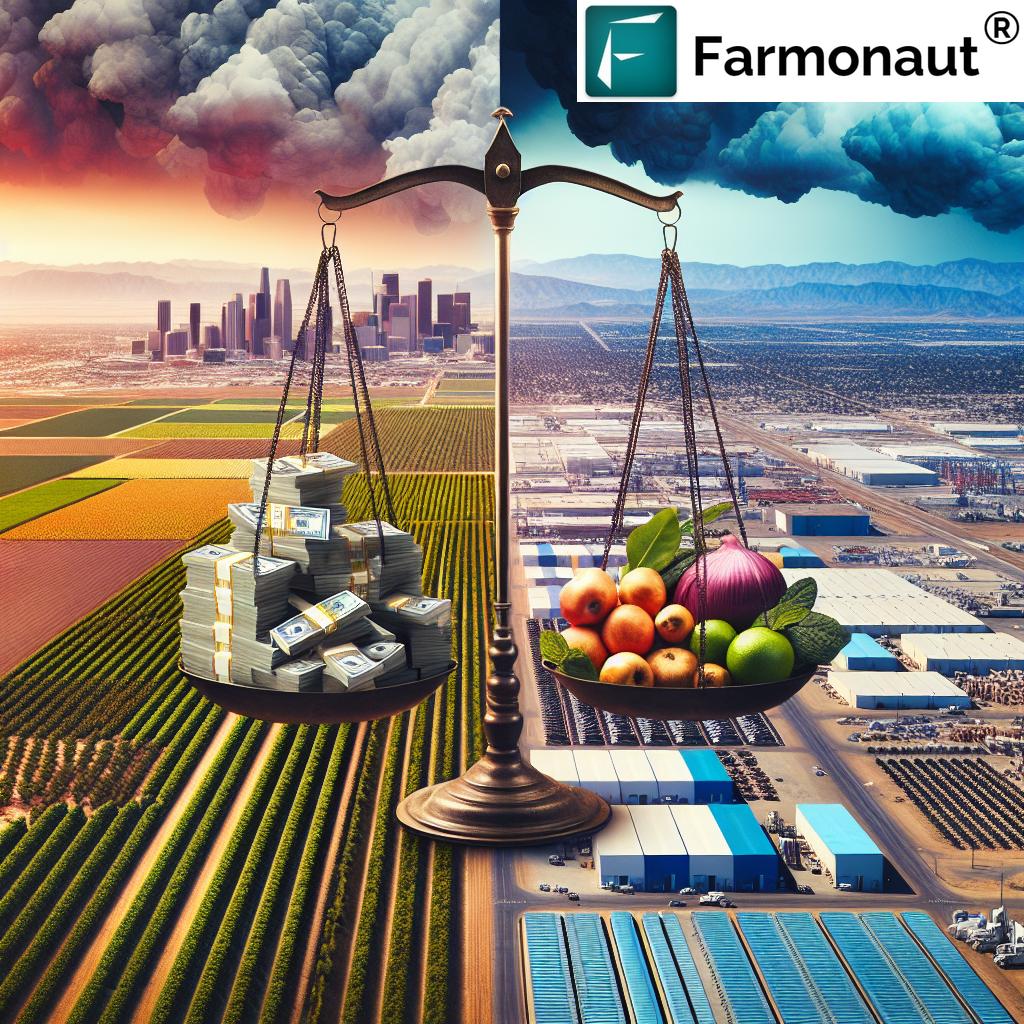Problems in Agriculture: Top US Farming Problems 2025
Table of Contents
- Introduction: The State of US Agriculture in 2025
- Trivia: Soil Degradation & Water Scarcity in 2025
- Major Agriculture Problems in the US (2025)
- Comparative Problem-Solution Table
- Digital Innovation & Farmonaut Solutions
- Farmonaut App, API and Satellite Solutions
- Trivia: Water Scarcity Impact in 2025
- FAQ
- Conclusion: Building a Resilient Future for US Agriculture
“Over 50% of US farmland faces moderate to severe soil degradation, threatening long-term crop productivity by 2025.”
Introduction: The State of US Agriculture in 2025
Agriculture remains a cornerstone of the US economy, sustaining millions through food production, employment, and export revenue. Yet, as we approach and navigate 2025, the sector faces a myriad of challenges threatening its sustainability and productivity. Understanding these problems in agriculture, their causes, and effective solutions is crucial for farmers, policymakers, and stakeholders seeking to ensure food security, economic stability, and a resilient rural future.
Throughout this exploration of farming problems—including climate change, soil degradation, water scarcity, labor shortages, economic pressures, and pest management—we’ll analyze the intricate web of pressures the agriculture sector faces. We’ll present a clear, comparative table to clarify major problems of agriculture and actionable solutions, while introducing the role of innovative technology (like that delivered by Farmonaut’s satellite and AI-driven solutions) in addressing these critical challenges.
Major Agriculture Problems in the US (2025)
The US, as the world’s largest agricultural producer, faces a set of persistent and evolving farming problems. This section will detail each major challenge, supporting our analysis with real-world data, expert insight, and the latest technological advancements in the sector.
1. Climate Change: The Game Changer
Climate change is one of the most significant problems in agriculture today. US farmers are experiencing erratic weather patterns, including:
- Prolonged droughts that devastate water resources and slow crop yields
- Unseasonal floods eroding soil and infrastructure
- Increased frequency of extreme weather events (heatwaves, storms, wildfires)
- Rising average temperatures leading to hotter summers and shifting rainfall patterns
Regions like the Midwest, traditionally considered America’s “breadbasket,” bear the brunt, seeing:
- Severe soil erosion
- Lower productivity and increased input costs (investment in new irrigation systems, conservation techniques, and resilient seed varieties)
- Shifting suitability for major crops (corn, soybeans, wheat)
The cumulative impact of these changes extends beyond immediate yield reductions, threatening the long-term stability of entire rural economies.
Solutions and Innovations:
- Developing adaptive seed varieties tolerant to heat and drought
- Deploying weather monitoring and forecasting technology
- Investing in carbon footprinting solutions for better environmental management
- Utilizing real-time satellite tracking for conservation planning
2. Soil Degradation: The Silent Crisis in Modern Farming
A severe yet sometimes overlooked problem in farming is soil degradation. Across the US, decades of:
- Intensive farming and monoculture practices
- Overuse of chemical fertilizers and pesticides
- Continuous tilling and lack of rotation
…have resulted in:
- Declining soil fertility and biodiversity
- Significant soil erosion
- Loss of essential soil nutrients, leading to nutrient depletion
- An increase in input requirements to sustain yields, reducing profitability and creating a vicious cycle
Regenerative agriculture and crop diversification are gaining momentum, but adoption can be slow due to knowledge barriers and up-front transition costs.
Innovations & Solutions:
-
Adopting precision soil health monitoring via satellite technology
Farmonaut’s crop and soil health advisory provides multispectral data, empowering farmers to apply precise interventions for soil conservation and optimal input use. - Introduction of cover cropping and reduced tillage practices
- Enhancing biodiversity by rotating crops and integrating livestock
- Organic matter reintroduction to restore soil health
3. Water Scarcity: Running Dry in America’s Farmlands
Water scarcity is an increasingly pressing challenge for agriculture in the United States. With agriculture as the largest consumer of freshwater, shrinking aquifers and growing competition from urban and industrial sectors are exacerbating the situation.
- Western US states, reliant on rivers like the Colorado, face acute allocation conflicts
- Drought cycles and shrinking snowpacks threaten sustainable food production
- Some farmers must either invest in expensive irrigation or leave farmland fallow
Sustainable irrigation, precise field water mapping, and new water-saving technologies are critical.
Strategic Responses:
-
Implementing satellite-driven water management solutions to monitor moisture, forecast irrigation needs, and prevent waste.
Leverage Farmonaut’s large-scale field management to optimize water allocation at farm or county levels. - Adopting drip irrigation and moisture-sensor-equipped farming
- Reusing treated wastewater where permitted
- Shifting water-intensive crops to less vulnerable regions
4. Labor Shortages: The Human Factor in Agriculture Problems
Modern US farming remains heavily dependent on human labor. In 2025, labor shortages have intensified due to:
- Restrictive immigration policies
- Aging rural workforce and declining populations in agricultural regions
- Low wages and challenging working conditions
Larger operations increasingly turn to mechanization, robotics, and AI-driven automation. However, the high cost and steep learning curve for such technologies threaten to widen gaps between large agribusiness and small/mid-scale family farms.
Ways Forward:
- Investment in affordable, scalable automation for a range of farm sizes
- Targeted training programs for rural youth and reskilling initiatives
- Farmonaut’s fleet and resource management tools assist with tracking and optimizing operations, reducing reliance on manual labor and lowering costs — see Fleet Management Solutions
5. Economic Pressures: Survival in the Modern Agriculture Sector
The economic climate remains tough for many US farmers. The combined effect of rising input costs (fertilizers, seeds, energy), volatile commodity prices, and consolidation in the sector has created a challenging landscape. Key problems in agriculture here include:
- High debt loads and difficulty accessing affordable credit
- Increasing insurance premiums due to unpredictable weather events
- Bargaining power diminished by sector consolidation
- Exposure to abrupt market changes and global disruptions
The stress is especially acute for small and medium-sized farms, many of which represent generational family agricultural enterprises.
Approaches to Mitigate Economic Trouble:
- Leverage satellite-based verification to streamline loan and insurance processes (visit Farmonaut Crop Loan and Insurance Solution for details)
- Join or form co-ops to increase buying power and tap shared resources
- Utilize AI-driven crop choice and market trend forecasts to maximize returns
- Diversify operations (agritourism, specialty/organic crops, value-added products)
6. Pest and Disease Management: Battling the Unseen
A perennial and evolving problem in farming is pest and disease management. Factors driving the issue in 2025 include:
- Warmer climates encouraging the proliferation and northward expansion of invasive species
- Globalized trade increasing the introduction of foreign pests and pathogens
- Overreliance on chemical pesticides resulting in resistance and environmental damage
Actionable Solutions:
- Adoption of integrated pest management (IPM) strategies combining biological, cultural, and chemical methods
- Deploying real-time satellite and AI-based crop health monitoring — our Farmonaut solution (explore the Crop Plantation/Farm Advisory App) allows early pest and disease detection
- Switching to biocontrol agents and crop rotation
Comparative Problem-Solution Table: Major Agricultural Problems in 2025
| Major Agricultural Problem (2025) | Estimated Impact (% of US Farms Affected) | Primary Causes | Suggested Solutions/Innovations |
|---|---|---|---|
| Climate Change | 75% | Greenhouse gas emissions, fossil fuel use, unsustainable practices, natural climatic shifts | Adaptive seed varieties, precision weather monitoring, carbon footprint tracking (Farmonaut Carbon Footprinting) |
| Soil Degradation | 50% | Monoculture, intensive tillage, chemical overuse, erosion, organic matter depletion | Regenerative agriculture, satellite soil health mapping (Farmonaut Crop & Soil Health App), crop rotation, reduced tillage |
| Water Scarcity | 40% | Declining aquifers, drought, overuse, increasing urban/industrial demand, climate change | Precision irrigation, satellite water management (Farmonaut Large Scale Farm Management), conservation incentives |
| Labor Shortages | 30% | Reduced migration, aging population, urbanization, low wage appeal | Scalable mechanization, automation, digital fleet & resource optimization (Farmonaut Fleet Management) |
| Economic Pressures | 55% | Input cost inflation, price volatility, market consolidation, risk/weather insurance gaps | Satellite-based loan/insurance verification (Farmonaut Solution), co-op participation, AI crop forecasting |
| Pest & Disease Management | 60% | Global trade, climate-induced pest range migration, resistance to pesticides, monoculture | IPM, early detection via satellite/AI (Farmonaut Cropland Advisory), increased biocontrol use |
Digital Innovation & Farmonaut Solutions: Future-proofing US Farms
While problems in agriculture remain multifaceted, innovative technology — particularly from satellite-based intelligence and AI analytics — offers hope. We at Farmonaut provide affordable, scalable tools for farmers, rural businesses, and government agencies to revolutionize the monitoring and management of soil, water, yields, and input application.
- Real-time satellite data for crop health, soil moisture, and environmental impact
- AI and machine learning to deliver tailored strategies in an advisory system
- Blockchain traceability to build transparency in the supply chain (Product Traceability Solutions)
- Carbon monitoring to enable climate-smart decision-making (Carbon Footprinting)
These solutions help reduce risk, optimize inputs, and ensure compliance with rapidly evolving environmental policy.
Farmonaut App, API, and Subscription Information
To make actionable insights widely accessible, Farmonaut provides mobile- and web-based tools for farmers, researchers, businesses, and governments. Here’s how you can integrate our satellite-driven resources into your agricultural operations today:
-

Farmonaut Web App: Access satellite-driven field health, soil moisture, water needs, and AI-guided advisory — all online. -


Farmonaut Mobile Apps: Keep your farm in your pocket—monitor, receive alerts, and manage fields anytime, anywhere. - REST API for Business Integrations: Engineering or running a digital ag solution? Tap into Farmonaut Satellite API (developer docs) to embed satellite monitoring, weather data, and soil analysis into your product or system.
Subscription and Pricing:
All solutions are designed to be cost-effective, scalable, and enable seamless integration across farms of all sizes — helping tackle the farming problems described above.
“By 2025, water scarcity could impact up to 40% of US agricultural regions, challenging sustainable food production.”
Frequently Asked Questions: US Agriculture Problems 2025
-
Q: What are the biggest problems in agriculture in the US as of 2025?
The top agriculture problems in the US include climate change, soil degradation, water scarcity, labor shortages, economic pressures from volatile markets and rising costs, and the rapid evolution of pest and plant disease threats.
-
Q: How is climate change affecting US farming?
Agriculture is facing more erratic weather patterns, higher average temperatures, increased extreme events, shifting rainfall, and changes in pest ranges. These make sustaining yields and financial stability more difficult.
-
Q: What steps can farmers take to overcome water scarcity?
Adoption of precision irrigation, satellite-guided moisture mapping, water conservation incentives, and shifting toward drought-tolerant crops and management practices can offer relief and improve sustainability.
-
Q: Why is soil degradation so important for US agriculture?
Healthy soil is the foundation for crop productivity. Degraded soils reduce yields, require more inputs, and undermine environmental health. Rebuilding organic matter, rotating crops, reducing tillage, and leveraging digital soil monitoring are key.
-
Q: Do small and medium farms benefit from digital ag technology?
Yes—affordable, accessible platforms like Farmonaut lower the barrier to entry, offering small and mid-size operations tools to monitor, manage, and optimize their farms with real-time data.
-
Q: What role does Farmonaut play in solving these agricultural challenges?
We empower users with actionable, satellite-driven insights covering crop health, soil moisture, water need prediction, carbon tracking, traceability, and resource management. Our solutions enable better decisions, compliance, and sustainability for farms and agri-businesses in the US and globally.
Conclusion: Building a Resilient Future for US Agriculture
To ensure the US continues as a cornerstone of global food security and economic stability, we must address the root causes and interconnected challenges underlying problems in agriculture. Climate, soil, water, labor, economic, and pest issues are complex but not insurmountable.
Coordinated action between farmers, scientists, technology providers, and policymakers, combined with advanced digital tools such as ours at Farmonaut, offer a robust path forward. By embracing adaptive, sustainable practices and technology, America’s rural heartland can continue to thrive — feeding the nation and the world, even as circumstances and demands change. The challenges for 2025 and beyond are clear; with collaborative, informed solutions, the agriculture sector will remain vital, resilient, and innovative in the years to come.


